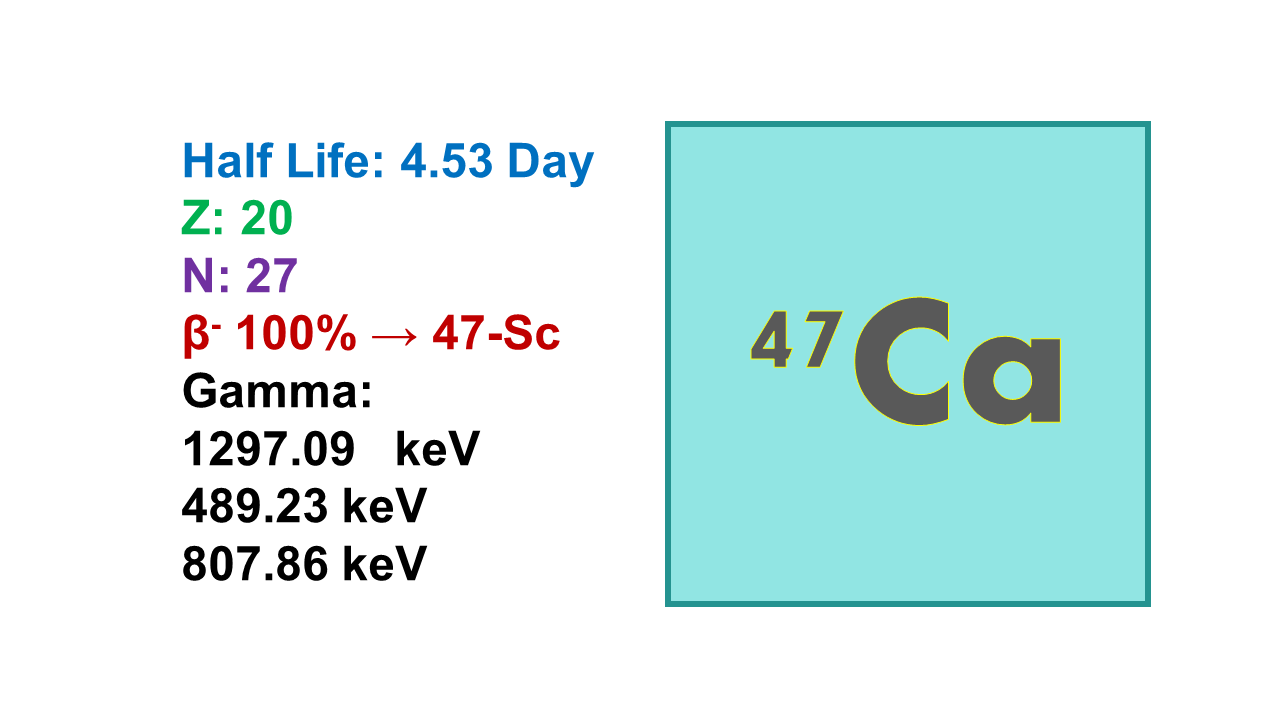
Calcium-47 (47Ca)
January 11, 2024
Properties:
Calcium-47 is an artificial radioactive nuclide of calcium, with a half‐life of 4.54 days. It emits β‐particles of two energy ranges (1,991 and 695 keV) and γ‐radiation at 1,297, 808 and 489 keV and it decays into stable 47Sc. Tenth value layer (TVL) is 17 cm for concrete and 3.2 cm for lead.
Manufacturing:
47Ca is quite difficult to produce. The neutron irradiation of 46Ca (only 0.003% abundance of natural calcium) results in a mixture of 46Ca and 47Ca and the separation is not possible.
Source and availability:
This radionuclide has never been required in large amounts, so despite difficulties in production, small available amounts from companies selling radionuclides for in vitro and preclinical tests are sufficient.
Derivatives:
47Ca is used to study the function of calcium in the body, i.e., in the diagnosis of disorders of calcium metabolism. It is not used as an imaging agent but only for in vitro tests with human fluid samples in very small amounts (µCi levels).
Price:
Very expensive, but usually labs order only a few µCi.
Issues:
◼ Very limited applications.
◼ Chemistry of calcium does not allow integration of this atom into an organic molecule.
Comments:
There is no real use and future for this radionuclide in nuclear medicine.